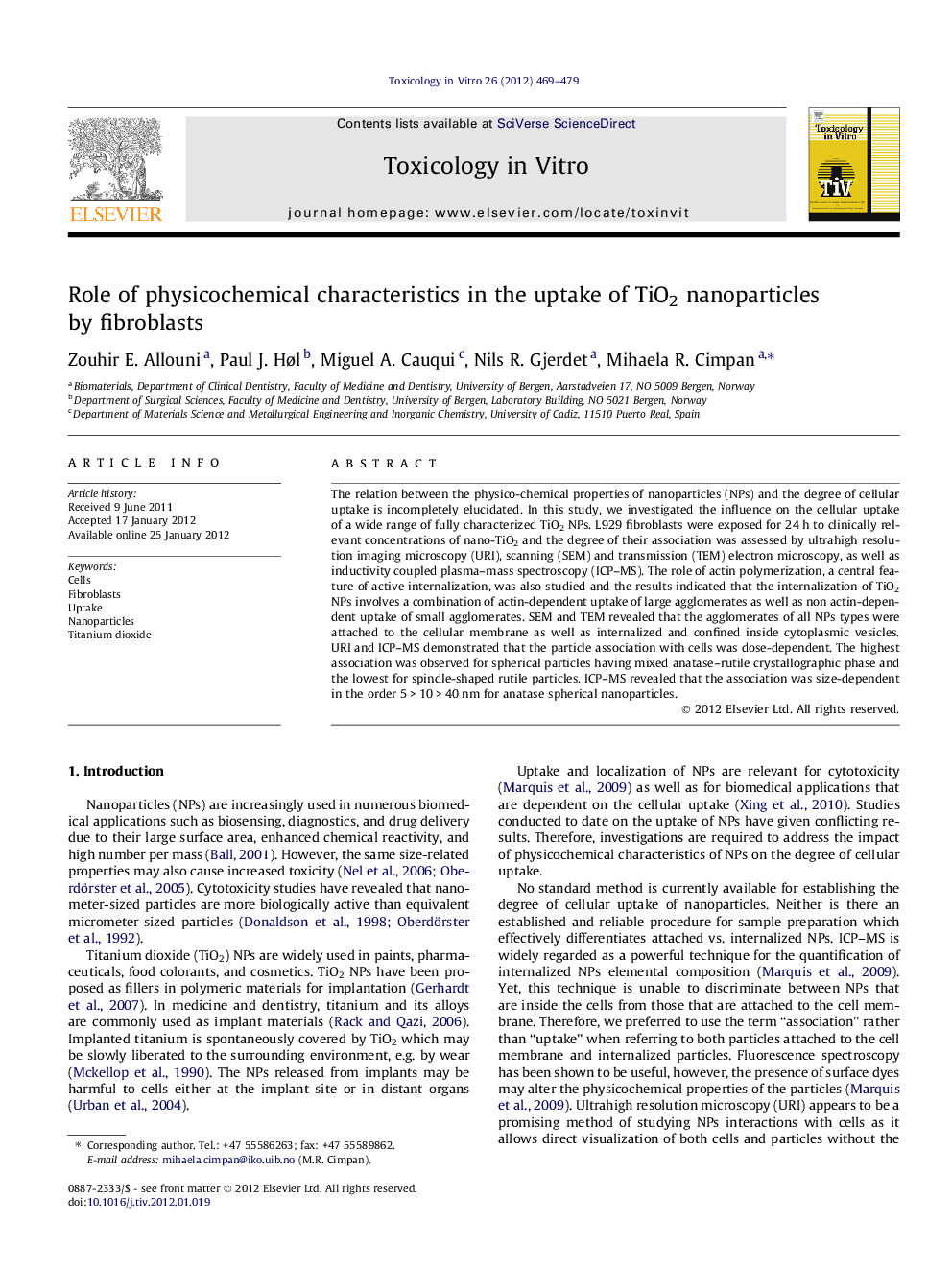| Article ID | Journal | Published Year | Pages | File Type |
|---|---|---|---|---|
| 2602670 | Toxicology in Vitro | 2012 | 11 Pages |
The relation between the physico-chemical properties of nanoparticles (NPs) and the degree of cellular uptake is incompletely elucidated. In this study, we investigated the influence on the cellular uptake of a wide range of fully characterized TiO2 NPs. L929 fibroblasts were exposed for 24 h to clinically relevant concentrations of nano-TiO2 and the degree of their association was assessed by ultrahigh resolution imaging microscopy (URI), scanning (SEM) and transmission (TEM) electron microscopy, as well as inductivity coupled plasma–mass spectroscopy (ICP–MS). The role of actin polymerization, a central feature of active internalization, was also studied and the results indicated that the internalization of TiO2 NPs involves a combination of actin-dependent uptake of large agglomerates as well as non actin-dependent uptake of small agglomerates. SEM and TEM revealed that the agglomerates of all NPs types were attached to the cellular membrane as well as internalized and confined inside cytoplasmic vesicles. URI and ICP–MS demonstrated that the particle association with cells was dose-dependent. The highest association was observed for spherical particles having mixed anatase–rutile crystallographic phase and the lowest for spindle-shaped rutile particles. ICP–MS revealed that the association was size-dependent in the order 5 > 10 > 40 nm for anatase spherical nanoparticles.
► Relation between physico-chemical characteristics of TiO2 nanoparticles and cellular uptake. ► Key factor in cytotoxicity. ► Shape, size, and crystallographic phase played a significant role in uptake.
